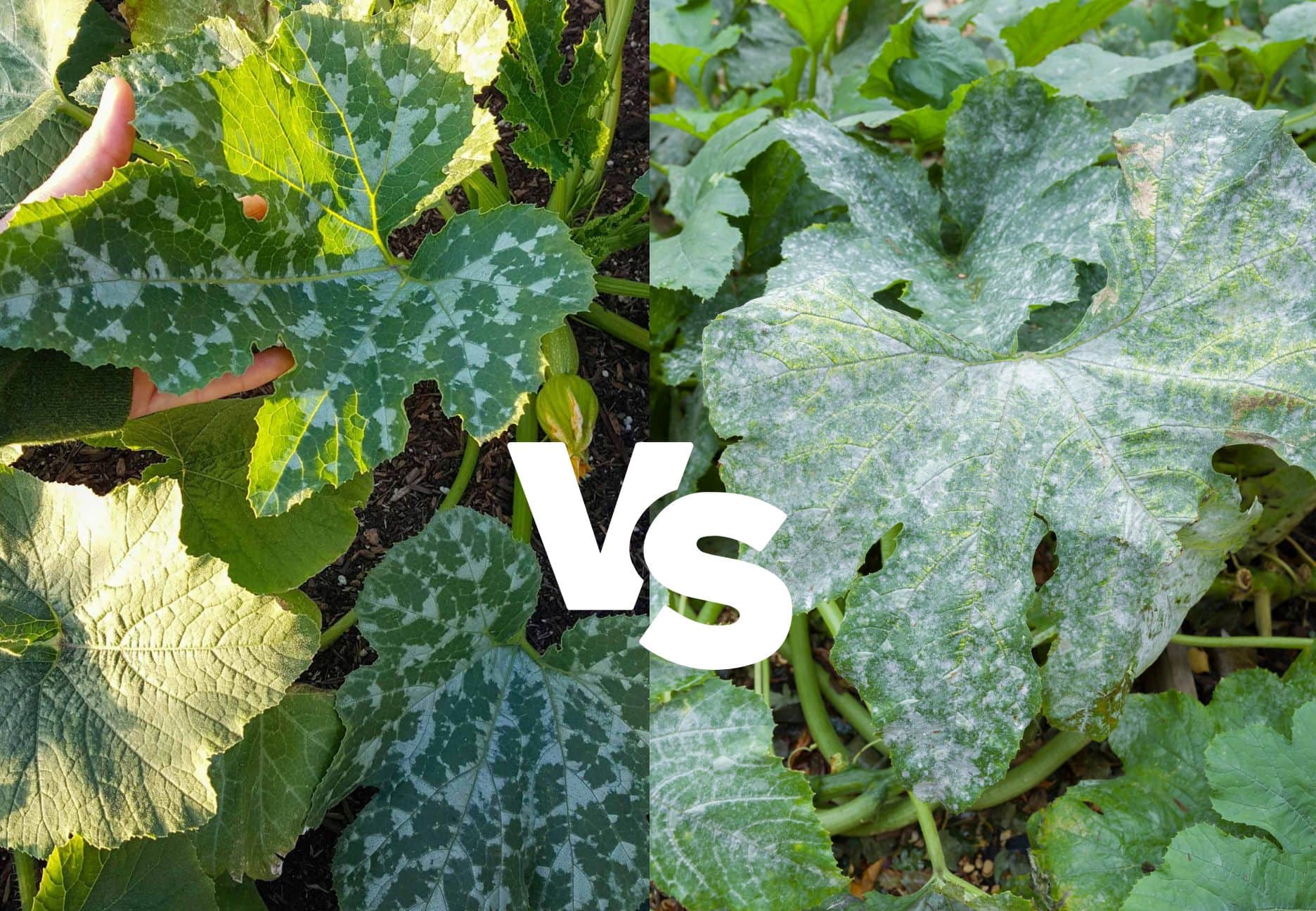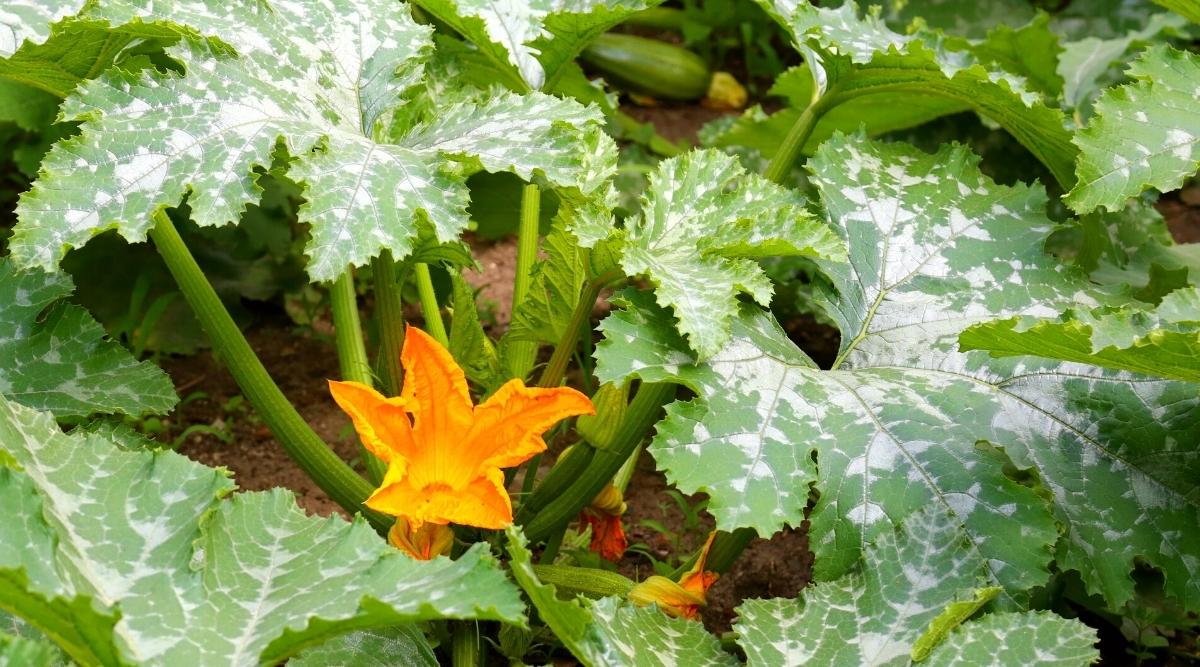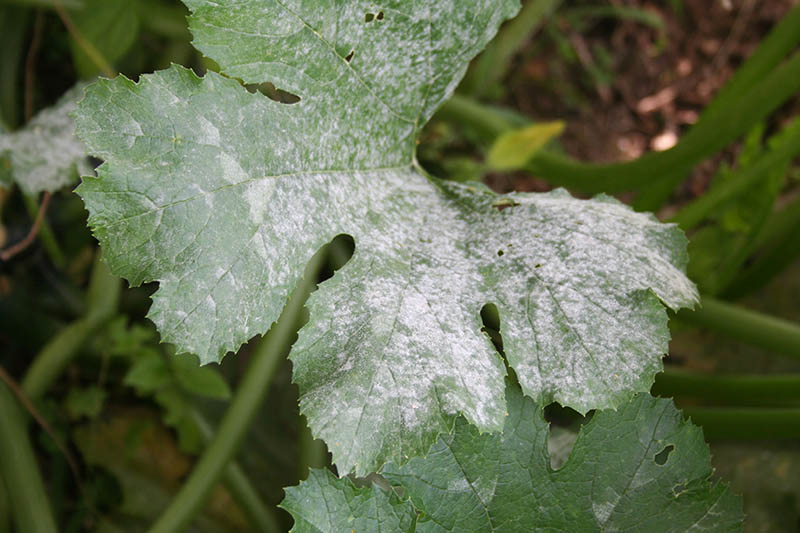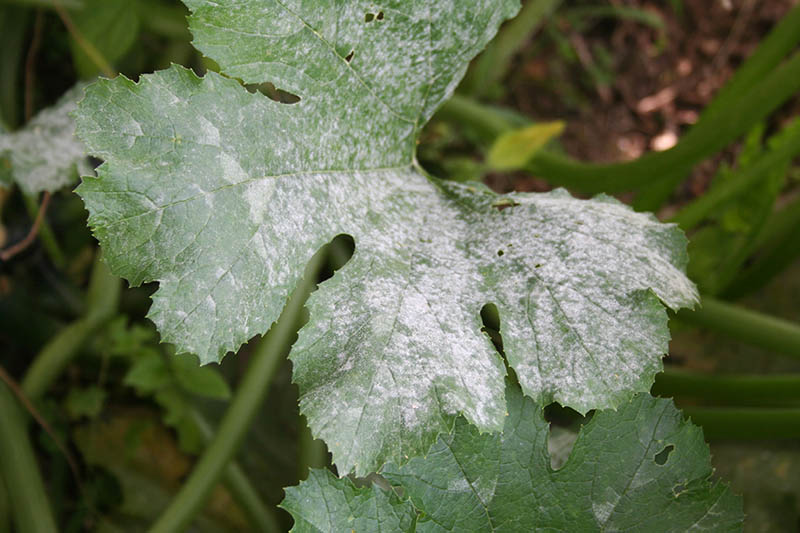Have you ever noticed that your zucchini leaves suddenly turn a mysterious shade of white? It’s a puzzling phenomenon that many gardeners experience, and understanding the causes behind this can help you ensure the health of your zucchini plants. In this article, we will explore the different factors that can lead to white zucchini leaves, providing you with valuable insights to keep your garden thriving. So let’s dig in and uncover the secrets behind this intriguing occurrence!

Introduction
If you’ve ever grown zucchini, you know how satisfying it can be to harvest and cook fresh, homegrown produce. However, it can be disheartening to discover that your zucchini leaves have turned white and unhealthy-looking. In this article, we will explore the various causes of white zucchini leaves and help you understand why this might be happening to your plants. By identifying the underlying issues, you can take appropriate measures to restore your zucchini plants to good health and ensure a bountiful harvest.
Pests and Diseases
Powdery Mildew
One common cause of white zucchini leaves is powdery mildew, a fungal disease that affects a wide range of plants. Powdery mildew appears as a white powdery substance on the leaves, stems, and even fruits of zucchini plants. It thrives in warm, humid conditions and can quickly spread if not addressed promptly. To prevent powdery mildew, ensure proper spacing between plants to promote good air circulation, avoid overhead watering, and consider utilizing organic fungicides if necessary.
Downy Mildew
Similar to powdery mildew, downy mildew is another fungal disease that can cause white patches on zucchini leaves. However, downy mildew presents as yellowish patches with a fuzzy appearance on the undersides of the leaves. It thrives in moist conditions and can spread rapidly, leading to wilting and eventual death of the affected plant. To prevent downy mildew, water plants from the base to avoid wetting the foliage, space plants adequately, and remove and destroy any infected leaves or plants.
Whiteflies
Whiteflies are tiny, sap-sucking insects that can infest zucchini plants and cause the leaves to turn white. These insects typically gather on the undersides of the leaves and can be identified by their white, powdery appearance when disturbed. Whiteflies not only damage the leaves but can also transmit diseases to the plants. To control whiteflies, introduce natural predators like ladybugs or use insecticidal soaps or oils specifically formulated to target whiteflies.
Aphids
Aphids are another common pest that can infest zucchini plants and lead to the whitening of leaves. These small, soft-bodied insects feed on the sap of the plants, causing stunted growth and distortion. The presence of aphids can attract ants, which feed on the honeydew produced by the aphids. To control aphids, spray the affected plants with a strong stream of water or use organic insecticides. Additionally, attracting beneficial insects such as lacewings and parasitic wasps can help keep aphid populations in check.
Spider Mites
Spider mites are tiny arachnids that feed on the sap of zucchini plants, causing leaves to turn white or yellowish. These pests are often more prevalent in hot and dry conditions. Spider mites are difficult to spot as they are very small and can quickly multiply, leading to extensive damage if left unchecked. To control spider mites, regularly inspect the undersides of the leaves for signs of infestation, and if necessary, use insecticidal soaps or oils specifically designed to target spider mites.

Nutritional Deficiencies
Nitrogen Deficiency
A lack of nitrogen can cause zucchini leaves to turn pale or yellowish, eventually leading to the whitening of leaves. Nitrogen is an essential nutrient that promotes healthy plant growth, and its deficiency can hinder the production of chlorophyll, resulting in leaf discoloration. To address nitrogen deficiency, apply a nitrogen-rich fertilizer or side-dress the plants with compost or organic matter to promote healthy leaf development.
Potassium Deficiency
A deficiency in potassium can also contribute to the whitening of zucchini leaves, as potassium is vital for various plant functions, including water regulation and nutrient transport. Leaves affected by potassium deficiency may appear mottled and eventually turn white. To remedy potassium deficiency, apply a potassium-rich fertilizer or incorporate potassium-rich compost or organic matter into the soil.
Iron Deficiency
Iron deficiency can manifest as white or yellowing leaves in zucchini plants. Iron is necessary for the production of chlorophyll, and its deficiency can result in poor leaf coloration. In some cases, the veins on the leaves may remain green while the spaces between them turn white. To address iron deficiency, incorporate iron chelates or foliar sprays into the soil, as they can help increase iron availability to the plants.
Calcium Deficiency
A lack of calcium can cause zucchini leaves to turn white and display signs of deformation. Calcium is crucial for cell wall development, and its deficiency can lead to the breakdown of cell structure. This deficiency can occur in areas with low calcium levels in the soil or irregular watering practices. To prevent or address calcium deficiency, maintain consistent soil moisture levels, ensure proper soil pH, and consider adding calcium-rich organic amendments or foliar sprays.
Environmental Factors
Sunburn
Excessive exposure to intense sunlight can cause zucchini leaves to develop white patches or scorched areas, similar to sunburn on human skin. Sunburn on zucchini leaves typically occurs when plants are suddenly exposed to intense sunlight after being in shaded conditions. To prevent sunburn, gradually introduce plants to direct sunlight, provide shading during the hottest part of the day, or choose varieties that are more tolerant of intense sunlight.
Frost Damage
Cold temperatures can cause zucchini leaves to turn white and become damaged, especially during late spring or early fall when frost can occur. Frost damage can lead to wilting, blackening, and eventual death of the affected plants. To protect zucchini plants from frost damage, cover them with blankets or row covers, or bring potted plants indoors during colder periods.
Excessive Heat
While zucchini plants require warmth to thrive, excessively high temperatures can lead to stress and the whitening of leaves. Heat stress can cause the plant’s cells to become dehydrated and damaged, resulting in white or bleached leaves. To alleviate heat stress, provide shade during the hottest parts of the day, mulch around the plants to conserve moisture, and ensure adequate soil moisture levels.
Water Stress
Both underwatering and overwatering can result in the whitening of zucchini leaves. Underwatering causes plants to become dehydrated and can lead to leaf discoloration, while overwatering can suffocate the plant’s roots, impeding proper nutrient uptake. To prevent water stress, maintain consistent and appropriate watering practices, allowing the soil to dry slightly between waterings.

Improper Soil Conditions
pH Imbalance
An imbalanced soil pH can affect nutrient availability to zucchini plants, potentially leading to leaf discoloration and the whitening of leaves. Zucchini plants thrive in slightly acidic to neutral soil with a pH range of 6.0 to 7.0. If the soil pH is too low or too high, certain nutrients may become less available to the plants, causing deficiencies and affecting leaf color. To adjust soil pH, test the soil and add appropriate amendments, such as lime for low pH or elemental sulfur for high pH.
Poor Drainage
Insufficient drainage can cause water to accumulate around zucchini plants’ roots, leading to root damage and nutrient deficiencies. Wet soil conditions can hinder nutrient uptake, resulting in leaf discoloration and the eventual whitening of leaves. To improve drainage, ensure that the planting area has well-draining soil or consider creating raised beds. Additionally, avoid overwatering and amend heavy clay soils with organic matter to promote better drainage.
Soil Compaction
Compacted soil can restrict root growth and prevent proper nutrient absorption, resulting in poor plant health and white zucchini leaves. When soil becomes compacted, it prevents air, water, and nutrients from reaching the roots effectively. To alleviate soil compaction, avoid walking or working on wet soil, regularly aerate the soil by loosening it with a garden fork, and incorporate organic matter to improve soil structure.
Chemical Damage
Herbicide Exposure
Accidental herbicide exposure can cause zucchini leaves to turn white and exhibit signs of damage. Herbicides can drift from neighboring areas or be inadvertently applied, leading to leaf discoloration and stunted growth. To prevent herbicide damage, exercise caution when applying herbicides near zucchini plants, avoid spraying on windy days, and carefully follow all product instructions.
Fertilizer Burn
Overapplication or uneven distribution of fertilizers can result in fertilizer burn, causing zucchini leaves to turn white or brown and become damaged. Fertilizer burn occurs when plants are exposed to excessive amounts of salts, which can dehydrate and damage plant tissue. To prevent fertilizer burn, follow recommended dosage rates, apply fertilizers evenly, and water plants thoroughly after application to help flush excess salts from the soil.

Genetic Factors
Varietal Susceptibility
Not all zucchini plant varieties are created equal in terms of resistance to various conditions, diseases, and pests. Some varieties may be more susceptible to certain factors that can cause white zucchini leaves. Before planting, research and choose zucchini varieties that are known for their resistance to common diseases, pests, and environmental stressors. By selecting the right variety, you can minimize the risk of your plants developing white leaves.
Improper Pruning
Over-Pruning
Excessive pruning of zucchini plants can weaken them and result in reduced leaf production and the whitening of leaves. Over-pruning can limit the plant’s ability to photosynthesize and produce energy, leading to pale or white leaves. While some pruning is necessary to maintain plant health and shape, avoid excessive pruning that removes too many leaves. Only remove damaged or diseased leaves and maintain a balance between foliage and fruit production.
Improper Technique
Pruning zucchini plants incorrectly can also contribute to white leaf discoloration and poor growth. Using improper pruning techniques can cause stress and damage to the plants, resulting in reduced leaf health and productivity. Before pruning, familiarize yourself with proper pruning techniques for zucchini plants to ensure you’re not inadvertently causing harm.

Overcrowding
Lack of Air Circulation
When zucchini plants are overcrowded and lack adequate air circulation, it can promote the development of diseases and pests, resulting in white leaves. Crowded plants can create a humid microclimate that favors the growth of fungal diseases like powdery mildew and downy mildew. To prevent overcrowding, ensure proper spacing between plants, prune excess foliage, and promote good air circulation to discourage disease development and maintain healthy leaf color.
Conclusion
White zucchini leaves can be caused by various factors, including pests and diseases, nutritional deficiencies, environmental factors, improper soil conditions, chemical damage, genetic factors, improper pruning, and overcrowding. By understanding these potential causes, you can diagnose the issue affecting your zucchini plants and take appropriate measures to address the underlying problem. By providing optimal growing conditions, implementing preventive measures, and choosing resilient plant varieties, you can ensure that your zucchini plants thrive, boasting vibrant and healthy green leaves throughout the growing season. With a little care and attention, you’ll be enjoying a bountiful harvest of delicious zucchini in no time. Happy gardening!



